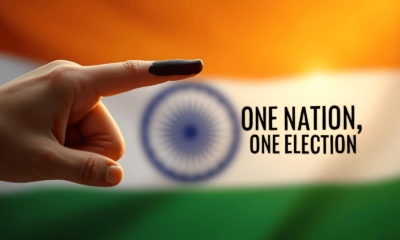Cover Story
Narendra Modi’s Leadership and Vision for India’s Future: What You Need to Know
Narendra Modi’s leadership has reshaped India’s future with bold reforms, focusing on modernization and global partnerships.
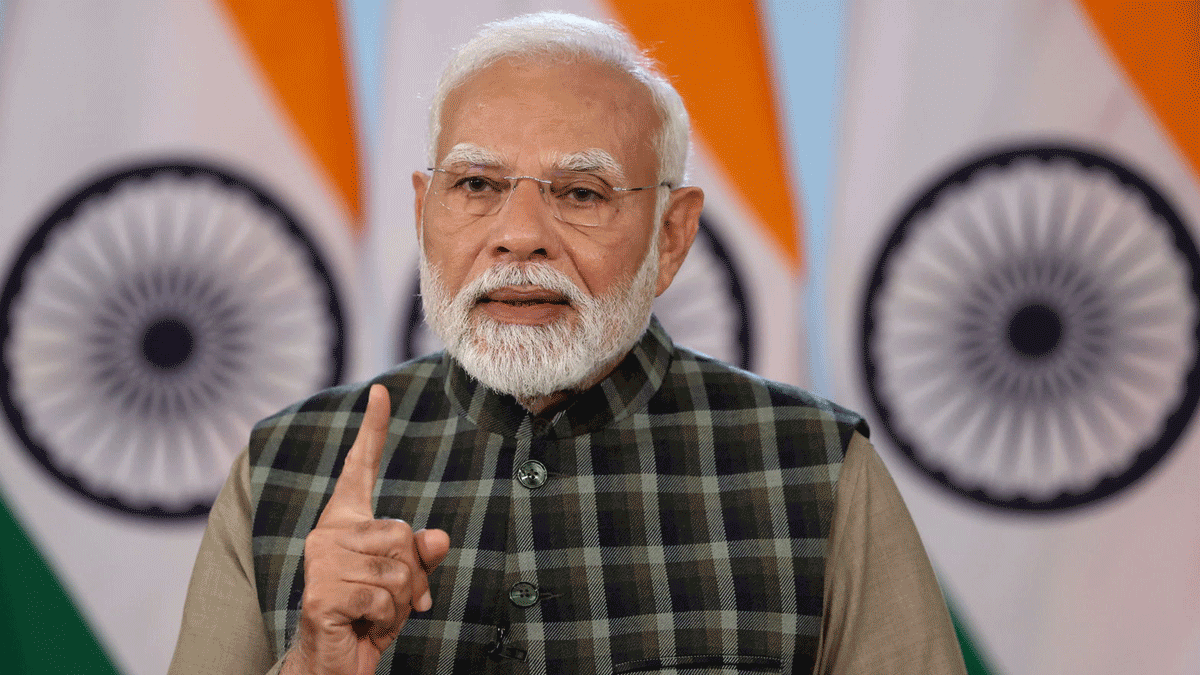
Narendra Modi, the 14th and current Prime Minister of India, is one of the most influential leaders in modern India. Since taking office in May 2014, he has introduced bold reforms and policies that have reshaped India’s economy, governance, and global image. Known for his focus on development, innovation, and diplomacy, Modi has led India towards growth and modernization.
Early Life and Political Journey
Narendra Damodardas Modi was born on September 17, 1950, in Vadnagar, Gujarat. He came from a humble background and helped his father sell tea as a child. Later, he ran his own tea stall, reflecting his simple beginnings.
Modi showed an interest in politics from a young age. He joined the Rashtriya Swayamsevak Sangh (RSS), a nationalist group, where he gained leadership skills. He later joined the Bharatiya Janata Party (BJP) and rose through its ranks due to his dedication and hard work.
In 2001, Modi became the Chief Minister of Gujarat. He served for 13 years, making Gujarat a hub for industries and infrastructure. His success earned him national recognition and paved the way for his journey to become India’s Prime Minister.
Key Achievements as Prime Minister
Economic Growth and Infrastructure Development
Make in India (2014): Boosted domestic manufacturing and attracted global investments.
Digital India: Promoted e-governance, online services, and better internet access.
Startup India: Encouraged startups and entrepreneurship, making India a global startup hub.
Smart Cities Mission: Focused on modernizing urban areas with better infrastructure and facilities.
Social Welfare and Public Schemes
Swachh Bharat Abhiyan: Launched to promote cleanliness and sanitation, making India open-defecation-free.
Jan Dhan Yojana: Helped millions of people open bank accounts, promoting financial inclusion.
Ayushman Bharat: The world’s largest health insurance scheme, providing free treatment to low-income families.
PM Ujjwala Yojana: Provided free LPG connections to poor households, reducing the use of unhealthy fuels.
Foreign Policy and Global Leadership
Modi’s diplomacy has strengthened India’s position globally. He has focused on building partnerships through:
Closer ties with countries like the United States, Japan, and Israel.
Promoting the Act East Policy to improve relations with Southeast Asian nations.
Advocating for India’s permanent membership in the UN Security Council.
Defense and Security Strengthening
Led Surgical Strikes (2016) and Balakot Airstrikes (2019) to tackle terrorism.
Modernized defense forces and promoted ‘Make in India’ in defense manufacturing.
Focused on border security and internal safety measures.
Tackling Challenges and Reforms
COVID-19 Response: Managed India’s pandemic response, launched Vaccine Maitri, and oversaw the world’s largest vaccination drive.
Economic Reforms: Introduced Goods and Services Tax (GST) for a unified tax structure and demonetization (2016) to fight corruption and black money.
Leadership Style and Popularity
Narendra Modi is known for his strong leadership, communication skills, and strategic vision. His radio program, ‘Mann Ki Baat’, connects him directly with the people. Modi’s emphasis on nationalism, cultural values, and modernization has earned him widespread support.
His vision of a ‘New India’ focuses on self-reliance (Atmanirbhar Bharat), innovation, and sustainable growth.
Awards and Global Recognition
Global Statesman Award and Champions of the Earth Award for his leadership in environmental reforms.
Featured in Time Magazine’s 100 Most Influential People list multiple times.
Honored with the Legion of Merit by the United States and several other international awards.
“Vision for the Future”
Narendra Modi aims to make India a $5 trillion economy by focusing on digital transformation, industrial growth, and innovation. Programs like Gati Shakti for infrastructure and Har Ghar Jal for clean water access are designed to promote inclusive development.
As India celebrated 75 years of independence (Azadi Ka Amrit Mahotsav), Modi shared his dream of making India a global superpower by 2047, when the nation marks 100 years of independence.
“Conclusion”
Narendra Modi’s journey from a tea seller to India’s Prime Minister is an inspiring story of determination and success. His leadership is defined by bold reforms, development programs, and international diplomacy. While his decisions often spark debates, his focus on building a strong, modern, and self-reliant India has made him a transformative leader. With a vision for economic growth and global influence, Modi continues to shape India’s future as a rising power on the world stage.
Watch and Subscribe to the YouTube Channel: EBT Entrepreneur Business Times
Cover Story
Maha Kumbh Mela 2025: Essential Insights You Need to Know
Join millions of pilgrims in Prayagraj for the Maha Kumbh Mela 2025, a journey of faith, spiritual renewal, and liberation through sacred rituals and celebrations.
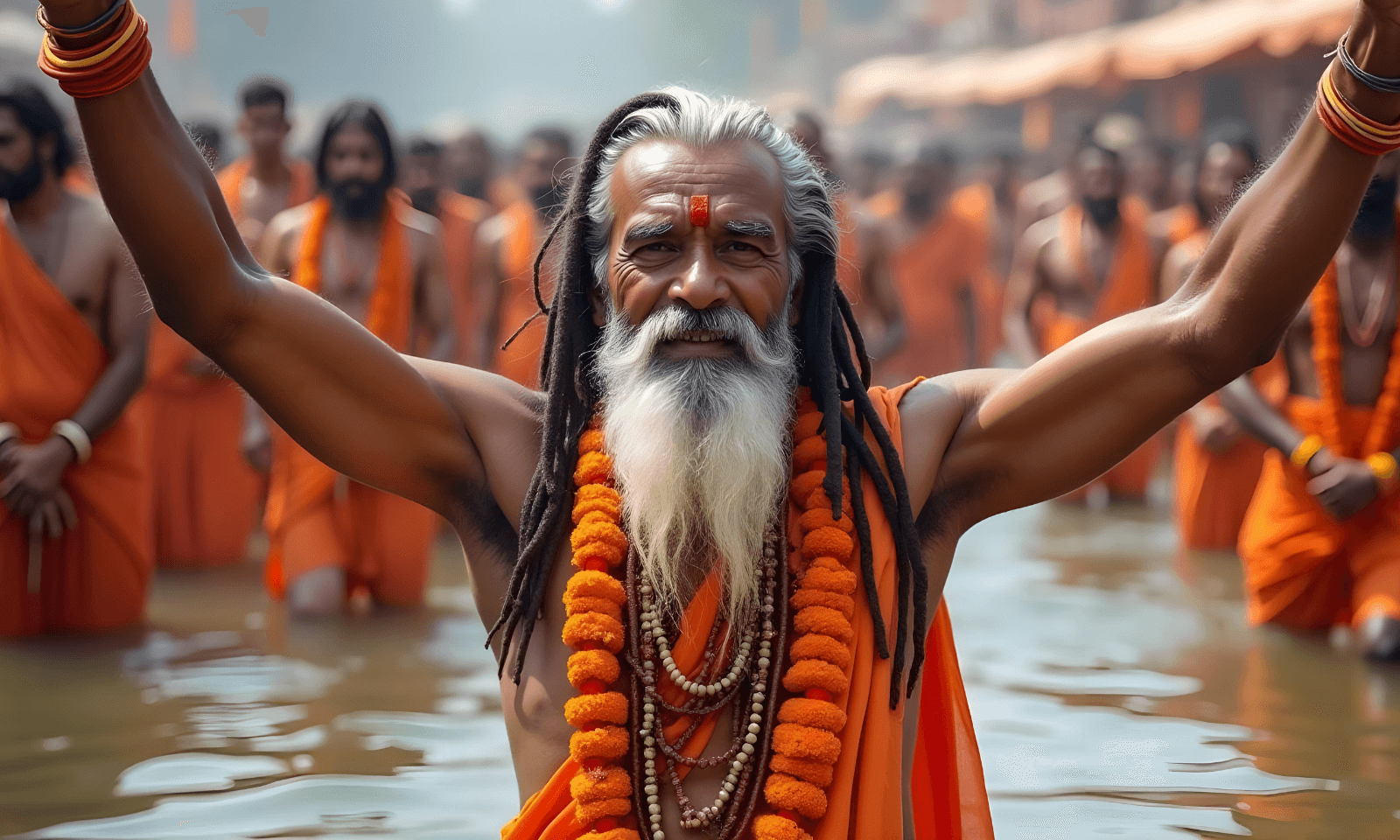
The Maha Kumbh Mela, one of the world’s largest and most important religious festivals, will take place in 2025 in Prayagraj, India. This spiritual event will attract millions of pilgrims from around the globe, all seeking purification, spiritual renewal, and liberation. The Kumbh Mela 2025 is expected to be a significant gathering for people worldwide, drawn by this ancient festival’s sacred rituals and traditions.
The festival occurs every 12 years, and the 2025 edition begins on January 13 with the Paush Purnima. Pilgrims will gather at the Triveni Sangam, where the sacred Ganga, Yamuna, and Sarasvati rivers meet. Bathing in these holy waters is believed to cleanse sins, end the cycle of rebirth, and bring Moksha, or spiritual liberation.
“The Importance of Rituals at Maha Kumbh“
The Maha Kumbh Mela is more than just a religious festival; it is a deeply spiritual experience. The central ritual is the sacred bathing ceremony, which spans several weeks. Alongside this, pilgrims pray, worship, and listen to spiritual discourses by saints and sadhus (holy men). These teachings inspire deep reflection on faith, spirituality, and the path to enlightenment.
A major highlight is the Shahi Snan or Royal Bath. On select days, saints, their followers, and members of various Akharas (religious orders) take part in grand processions, culminating in a sacred dip in the river. The Rajyogi Snan holds the greatest significance, marking the official beginning of the Mela celebrations.
“Key Dates for Maha Kumbh 2025”
Several dates during the Mela hold special significance for pilgrims. These include:
- Paush Purnima: January 13, 2025 – The start of the sacred bathing period.
Makar Sankranti: January 14, 2025 – A day of spiritual renewal when the Sun enters Capricorn.
Mauni Amavasya: January 29, 2025 – The most important day for taking a holy dip in the rivers.
Basant Panchami: February 3, 2025 – A celebration of the arrival of spring and new beginnings.
Maghi Purnima: February 12, 2025 – A day for spiritual reflection.
Maha Shivaratri: February 26, 2025 – A night of devotion to Lord Shiva.
Each of these dates holds deep spiritual significance, drawing large crowds of devotees to Prayagraj.
“A Global Celebration of Faith and Culture”
While the Maha Kumbh Mela is a deeply spiritual event, it is also a global celebration, attracting tourists, spiritual seekers, and cultural enthusiasts from around the world. The Mela provides a unique opportunity to experience India’s rich spiritual traditions and diverse culture.
To make the event even more engaging, the Uttar Pradesh Government, in partnership with MyGov, has launched several initiatives to encourage public participation. These activities will share the spirit of the Kumbh Mela with people worldwide, inviting them to experience the cultural and spiritual grandeur of this sacred event.
“Conclusion”
The Maha Kumbh Mela 2025 is more than just a religious event; it is a transformative spiritual journey for millions of people. It offers an opportunity to seek purification, renewal, and liberation while experiencing India’s rich cultural heritage. As the Mela approaches, it stands as a powerful symbol of unity, faith, and the pursuit of spiritual growth for all who attend.
Cover Story
Donald Trump’s Key Policies: Essential Insights You Need to Know
Donald Trump’s leadership in his first term impacted U.S.-India relations. From trade deals to defense, his policies left a lasting legacy. A potential second term promises further strengthening of ties.
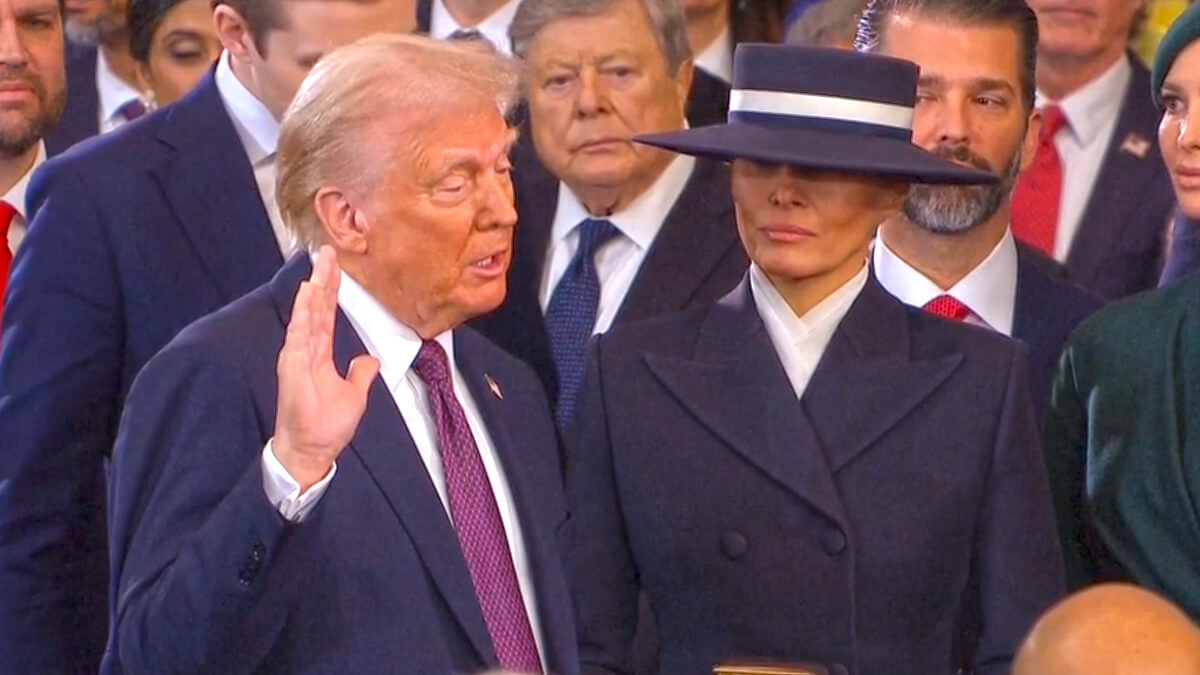
Donald J. Trump, the 45th President of the United States, is aiming to return to the White House as the 47th president. His goal is to build on the successes of his first term, further strengthening the U.S. economy and its global position. His potential second term holds particular significance for countries like India, where his leadership and policies have left a lasting influence on Trump’s US-India relations and US-India trade.
“Key Achievements of Trump’s First Term”
During his first term, Trump achieved significant milestones that reshaped U.S. policies. A notable accomplishment was U.S. energy independence, which helped reduce the country’s reliance on foreign energy sources. Trump also established the Space Force, a new branch of the U.S. military focused on space defense, reflecting his forward-thinking approach to technology and defense.
In addition, Trump played a crucial role in fostering peace in the Middle East. His administration brokered the Abraham Accords, leading to historic peace agreements between Israel and several Arab nations. Domestically, he pushed for tougher immigration policies and enhanced border security, contributing to his Donald Trump legacy of implementing bold and decisive policies.
“Trump’s Unconventional Political Journey”
Trump’s path to the presidency was unconventional. He became the 45th president despite never holding a public office before. A successful businessman, Trump built a real estate empire and gained significant wealth. His background in business, combined with his degree from the University of Pennsylvania’s Wharton School of Finance, helped shape his leadership style, emphasizing American exceptionalism and success.
“Strengthening U.S.-India Relations Under Trump”
Trump’s policies had a significant impact on U.S.-India relations. His administration worked closely with India, enhancing economic ties and expanding military cooperation. Trump’s direct interactions with Indian Prime Minister Narendra Modi played a key role in improving trade relations and addressing trade imbalances, which were part of the broader US foreign policy India strategy. Additionally, his policies focused on countering regional security threats, an area of importance for both the U.S. and India, and aligned with broader efforts to strengthen international alliances.
“Trump’s Influence Beyond Politics in India”
Beyond politics, Trump also made his mark in India’s business world. His book, The Art of the Deal, remains a popular read among Indian entrepreneurs seeking to replicate his approach to business and negotiations. As both a businessman and media figure, Trump’s brand has gained significant recognition, particularly in India, where his business acumen resonates with many.
“Trump’s Personal Life and Legacy”
On a personal note, Trump is a father of five children, including Ivanka and Don Jr., both of whom have pursued successful careers in business and public life. The visibility of his family in the media has helped keep the Trump name in the spotlight, further strengthening his global brand, which remains influential in shaping US foreign policy in India.
“What’s Next for Trump’s Presidency?”
As Trump seeks a second term, his policies will likely continue to shape global relations, particularly in the context of Trump’s US-India relations. For India, his return could deepen diplomatic ties, enhance economic cooperation, and promote regional security. Whether through US-India trade, defense, or business, Trump’s influence on U.S.-India relations will remain strong and significant in the coming years.
Conclusion: Donald J. Trump’s first term left a significant impact on both the U.S. and India. As he looks toward a potential second term, his leadership will continue to influence international relations, particularly in trade, defense, and global cooperation. Trump’s legacy will likely continue to shape U.S.-India relations and the global political landscape for years to come.
-

 Cover Story2 weeks ago
Cover Story2 weeks agoDonald Trump’s Key Policies: Essential Insights You Need to Know
-

 Cover Story2 weeks ago
Cover Story2 weeks agoMaha Kumbh Mela 2025: Essential Insights You Need to Know
-

 Business2 weeks ago
Business2 weeks agoWomen Entrepreneurs’ Impact on Business Growth: What You Need to Know
-
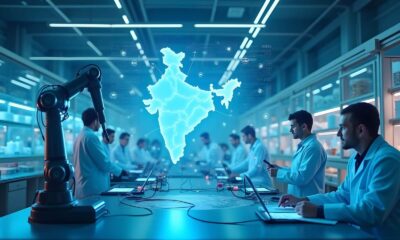
 Pharma1 month ago
Pharma1 month agoIndia’s Pharma Industry Transformation: What You Need to Know
-

 EV1 month ago
EV1 month agoIndia’s New EV Charging Guidelines: Essential Insights You Need to Know
-

 Auto1 month ago
Auto1 month agoOsamu Suzuki’s Impact on India’s Automotive Industry: What You Need to Know
-

 Pharma1 month ago
Pharma1 month agoIndia’s Pharmaceutical Growth: What You Need to Know
-

 Tech1 month ago
Tech1 month agoOpenAI’s Shift to Profit: Key Insights You Need to Know








